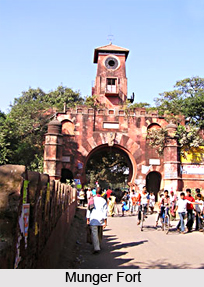 Monuments in Munger are the evidences of the glorious past of the district in the Indian state of Bihar. The Munger town also acts as the headquarters of the district of Munger. Munger is historically famous for the manufacturing of iron articles like swords and firearms. There is very little to be known about the rich and glorious history of the district of Munger where nothing of the past remains apart from the renowned Fort, while the place formed previously the capital of the old Anga kingdom.
Monuments in Munger are the evidences of the glorious past of the district in the Indian state of Bihar. The Munger town also acts as the headquarters of the district of Munger. Munger is historically famous for the manufacturing of iron articles like swords and firearms. There is very little to be known about the rich and glorious history of the district of Munger where nothing of the past remains apart from the renowned Fort, while the place formed previously the capital of the old Anga kingdom.
Munger is situated close to the site of the Battle of Buxar in which Bihar was conquered by the British. As per tradition, Munger was established during the Gupta Empire in India, which is regarded as the Golden age in the history of India. Mir Qasim, the Muslim leader, utilized Munger as a base in the time of his fight against the British in the year 1764. Munger was a place of considerable importance from the earliest days of English settlement in Bengal. It lies on the south bank of the Ganga River, at a distance of about six miles from Jamalpur junction, and was one of the principal centres of Muslim administration. Prince Danyal, son of Husain Shah, the Afghan King of Gaur, repaired the fortification in the year 1497 and constructed a vault over the tomb of Shah Nafah, the town`s patron. Under the rule of Akbar, the town was again repaired and used as the headquarters of his general, Todar Mal. Later Mir Qasim moved here from Murshidabad to prepare his moves against the English in the year 1762.
The Munger Fort is an impressive structure, in spite of damage sustained in the earthquake of 1934. It contains a number of houses and public offices and projects some distance into the river. A deep ditch protects the landward approach. The main entrance is through the Lai Darwaza or Red Gate. The main road passes two tanks, behind one of which is the Kama Chaura house. The Collector`s office, once the palace of Shah Sahib, stands on a low hill behind the other, with a former residence of Shah Shuja beyond that. Close to the north gate of the fort is an old European cemetery, which has fine eighteenth century tombs in the form of pillars and pyramids raised from 1769 onwards.